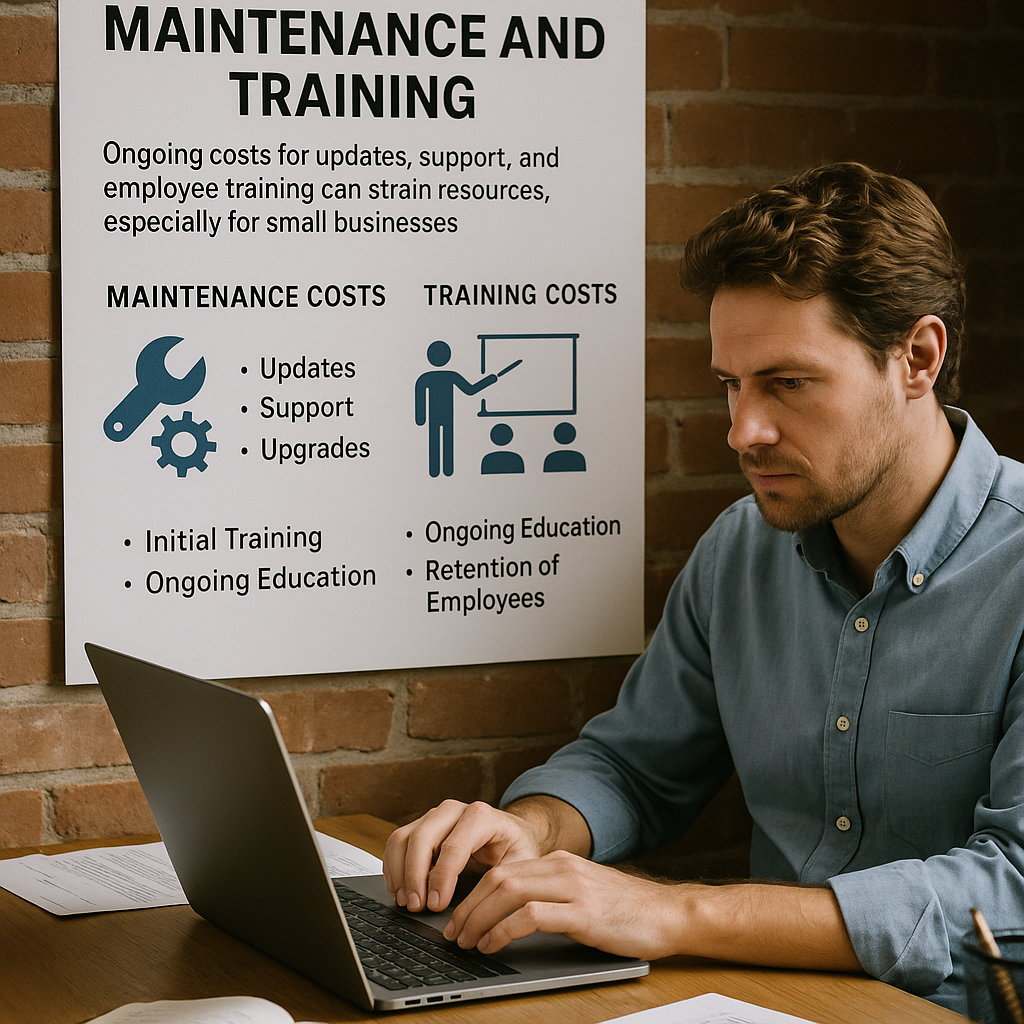
By Jenny Holly Hansen | WBN News | May 23, 2025
When we talk about investing in new technology, the conversation often starts with upfront costs—hardware, software licenses, or setup fees. But the real expense often unfolds long after the tech is installed. For small businesses, the ongoing demands of maintenance and training can quietly erode budgets and productivity if they’re not planned for from the start.
Technology isn’t a set-it-and-forget-it asset. It’s a living system that needs updates, support, and—most importantly—people who know how to use it. And those needs come with a price tag.
The Real Cost of Maintenance
Every tech solution, no matter how powerful or sleek, requires maintenance. From regular updates and patches to system upgrades and cybersecurity improvements, keeping your technology current is crucial. Here’s why it matters:
- Security risks increase dramatically when systems aren’t updated regularly.
- Outdated tools lead to performance issues and compatibility problems.
- Vendor support often depends on staying within current software versions.
For small businesses, these maintenance costs—whether internal or through third-party IT support—can become significant. What begins as a budget-friendly tool can evolve into a resource-hungry liability if left unchecked.
Training: The Make-or-Break Factor
A tool is only as effective as the person using it. New software and systems often promise increased efficiency, but only deliver if employees are trained properly. Without solid onboarding and continuous learning, teams may struggle with:
- Low adoption rates
- Process bottlenecks
- Increased user errors
- Resistance to change
And this isn’t just a one-time investment. As platforms evolve, new features roll out, or team members come and go, training must be an ongoing effort. Whether it’s hosting quarterly workshops, subscribing to learning platforms, or offering in-house tutorials, investing in your people is just as critical as the tech itself.
What Small Businesses Can Do
If you’re a small business navigating limited resources, here’s how you can stay ahead:
- Budget for the full lifecycle. Don’t just plan for the purchase—build in a yearly allocation for updates, maintenance, and training.
- Choose scalable tools. Look for platforms that grow with your business and don’t require constant, costly upgrades.
- Lean on vendor support. Make use of training libraries, onboarding tools, and help desks already offered by your providers.
- Cross-train internally. Empower team members to become in-house champions who can support and train others.
- Review tech ROI regularly. Assess whether your systems are still delivering value, or if they need adjustment.
Final Thoughts
In a time where digital transformation is essential to staying competitive, the hidden costs of maintenance and training are often what separate successful tech rollouts from expensive disappointments. As a small business, you don’t need the flashiest tool—you need one that fits, adapts, and supports your team without draining your time or capital.
Technology should be an asset, not a burden. And that balance starts with planning for the long haul.
Let’s Keep Talking:
Jenny is a business insurance broker with Waypoint Insurance. With 19 years experience, she will well versed in the technical aspects of business coverages.
She can be reached at 604-317-6755 or jholly-hansen@wbnn.news. Connect with Jenny on LinkedIn at https://www.linkedin.com/in/jenny-holly-hansen-365b691b/. Connect with Jenny at BlueSky: https://bsky.app/profile/jennyhollyhansen.bsky.social
Let’s Meet Up:
Jenny Holly Hansen is a cohost with Chris Sturges of the Langley Impact Networking Group. You are welcome to join us on Thursday’s from 4pm to 6pm at: Sidebar Bar and Grill: 100b - 20018 83A Avenue, Langley, BC V2Y 3R4
TAGS: #Jenny Holly Hansen #Technology #Hidden Cost Curve #PRoductivity #The Real Cost of Maintenance



